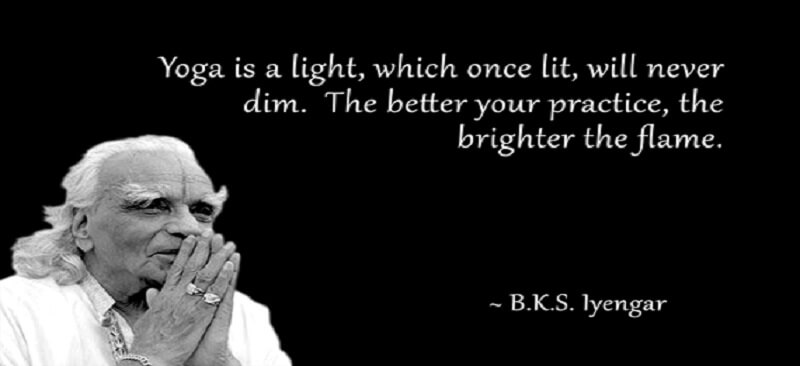Therapeutic Yoga
Ashtang Yoga
WHY IS YOGA A PART OF HOLISTIC CLINIC?
- Dr. Mitali’s personal experience with yoga has been instrumental in helping her heal from her stage 3 Ovarian Cancer. She had learnt Yoga and the principles of Ashtanga Yoga long before her illness. She practiced it as and when her busy schedule allowed her
- When she was detected with Cancer in June 2013, she once again started a regular and rigorous practice of the yoga every day. It instrumental in laying the foundation for her to miraculously heal from her cancer without chemotherapy within a short span of 6months
- She gives paramount credit to the eight limbs of Ashtanga yoga in her recovery and finds it important to include it in her treatment plan for patients taking treatment at Holistic Clinic.
WHAT IS YOGA?
- The word Yoga comes from the Sanskrit root word Yuj which means to join. “Yujyate anena iti yogah” – which means, “That which joins is Yoga”. Yoga is joining of the individual consciousness (or Jivatma) to the Universal Consciousness (Paramatma).
- IT IS A STATE OF UNION OF THE MIND BODY AND SOUL IN ORDER TO EXPERIENCE EVERY MOMENT OF LIFE TO ITS FULLEST EXTENT.
- Yoga is a scientific method to explore the full potential of a human being. It not only harmonizes one’s interaction with the external world, but also balances our internal world, resulting in peace and awareness of mind; the final goal being experiencing one’s oneness with the Cosmic Consciousness
WHAT IS ASHTANGA YOG?
- The eight fold path to achieve this state of union is called as Ashtanga Yog.
- It is also called as “prayoga sastra” or a practical science. It is more about techniques to evolve the human consciousness, rather than a mere philosophy.
- It was Maharishi Patanjali who expounded the science of yoga in systematic way, in his Patanjali Yoga Sutras.
- The yoga sutras are arranged in four chapters. The sage Patanjali starts the first chapter with the description of Samadhi or the state of super consciousness. In the subsequent chapters, he describes the various steps and processes to achieve this highest state of Samadhi, including the obstacles encountered in the process. These steps have come down to us as ‘Ashtanga Yoga’ or the eight limbs of yoga.
- Though the word ‘Ashtanga Yoga’ is not mentioned by Patanjali, it later came to denote the eights steps or limbs of yoga contained in his text. They are Yama, Niyama, Asana, Pranayama, Pratyahara, Dharana, Dhyana and Samadhi.
HOW ARE THESE EIGHT LIMBS PRACTICED IN DAY TO DAY LIFE?
- Yoga as taught in most of today’s yoga classes, do not covers the entire range of yoga experience. They may concentrate more on asana (physical yogic postures) and Pranayama (controlled yogic breathing techniques), without understanding that these are only a part of the entire system of Yoga philosophy.
- Even though we talk of eight levels, these are not strict compartments. One merges with the other. Also, spiritual masters guide their students in their own innovative style.
- It is not necessary that one has to start at the first practice (of Yama), even though that is desirable and advisable.
- It is good to have mastery of one stage before one proceeds to the next. But this need not be a strict rule. For eg, one may start with meditation practices first and then later learn the asanas.
- Most spiritual teachers mix and match these techniques and adapt the teachings to suit their students.
WHAT IS YAMA?
-
Yama. The first stage
- Yoga deals with human evolution. It starts with advice on harmonizing the external and internal life while living in society.
- The first two steps called Yama and Niyama are precisely aimed at achieving this harmony. They are often wrongly described as dos and don’ts. But in reality, they are guidelines for a balanced life. It helps to create a harmonious and peaceful society.
- There are five yamas –
- Satya (truthfulless),
- Ahimsa (non-violence, not hurting other beings physically or mentally),
- Asteya (non-stealing),
- Aparigraha (non –collecting, taking from nature only what one needs and not accumulating beyond ones needs)
- Brahmacharya (a balanced sexual life, essentially means control over your senses and living without over-indulgence. It can also mean celibacy for renunciants and monks). As you see all these contribute to social mode of conduct.
What IS NIYAMA?
-
Niyama The second stage
- here are five Niyamas which contribute to the personal mode of conduct.
- Saucha (cleanliness or personal hygiene, including mental purity),
- Santosa (means contentment),
- Tapas (self-discipline),
- Swadhaya (means self-study, which can mean studying the nature of one’s own mind and doing inquiry into one’s own reality) and
- Iswara Pranidhana (which means total acceptance of life, facing all life situations with equanimity. It also denotes surrender to the will of God.)
WHAT IS ASANAS?
-
Asana. The third stage
- The next step is called Asana or postures. The yoga sutras define asana as – ‘Sthiram Sukham Asanam’, which means Asana is a posture that is steady and comfortable.
- Asana is an essential step towards the higher practices of yoga. Asanas can be meditative poses (like Padmasana, Sukasana, Siddhasana, etc) or they can be other poses aimed towards attaining strength, balance and steadiness. Apart from the spiritual benefits, each Asana can have particular health benefits too.
WHAT IS Pranayama?
-
Pranayama The fourth stage
- Pranayama means the regulation of breath.
- Breath and mind are closely related. The breath is a bridge that connects the body and the mind.
- If one can control the breath, one can control the mind and visa versa.
- Pranayama gives steadiness and calmness to the mind.
- Prana or bio-energy flows through pranic pathways called nadi. Pranayama helps to clean these nadis and remove all impurities, commonly referred to as ‘Nadi Shuddhi’ . This has a direct effect on the physical body as a well as the mind.
- Our health improves and one gets clarity of mind. One experiences a sense of wellbeing.
- Only a calm mind can go inwards. An agitated mind cannot be meditative. Pranayama automatically leads to the next stage called Pratyahara, which is the withdrawal of senses from the external objects.
WHAT IS PRATYAHARA?
-
Pratyahara. The fifth stage
- Pratyahara leads the mind inwards, preparing it for meditation.
- In pratyahara, the mind is withdrawn from the senses and the sense objects, yet remaining fully aware of the inner processes.
- Pratyahara is the stage between externalizing and internalizing the mind. It is somewhere in between. It is a stage where the mind can now dive deeper into its inner reality. It is free of external distractions.
WHAT IS DHARANA?
-
Dharana.The sixth stage
- Dharana has to do with concentration. The word used in Yoga Sutras is ‘Samapatti’ or absorption. If the mind can be absorped at a point or an idea or an object, it is called dharana.
WHAT IS DYANA? IS THIS WHAT WE CALL MEDITATION?
-
Dhyana. The seventh stage
- Prolonged period of dharana leads to the next stage called Dhyana. This is commonly translated as meditation.
- It is the absorption of the mind on one object, or point or an idea, without distraction for a prolonged period of time. It is continuous and without break.
WHAT IS SAMADHI?
-
Samadhi. The ultimate stage
- The last stage of Yoga is called Samadhi or super conscious awareness.
- As one proceeds on the path of dhyana or meditation, a point comes when one loses self-consciousness or the sense of ‘I’. This is the beginning of Samadhi state.
- In this state – the meditator, the process of meditation and the object of meditation becomes one. Samadhi is actually a series of states and experiences.
- Yoga Sutras describes various types of samadhis. One has to go through the different types of Samadhi experience. Finally the practitioner reaches the highest stage of illumination called ‘Dharma Megha Samadhi’, which liberates the practitioner from all limitations of body and mind.
Below are the types of Theraputic Yogas offered by Dr. Mitali





